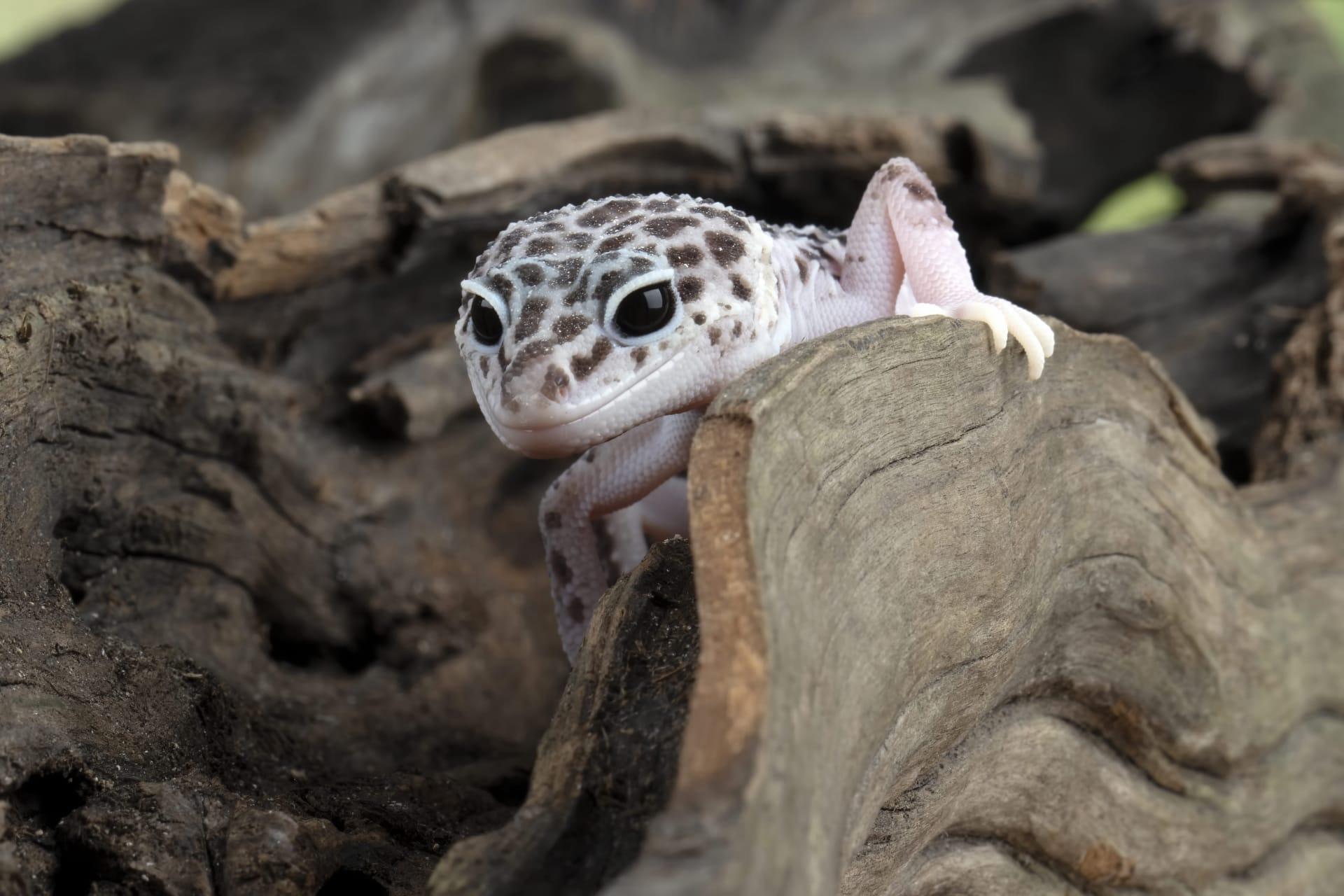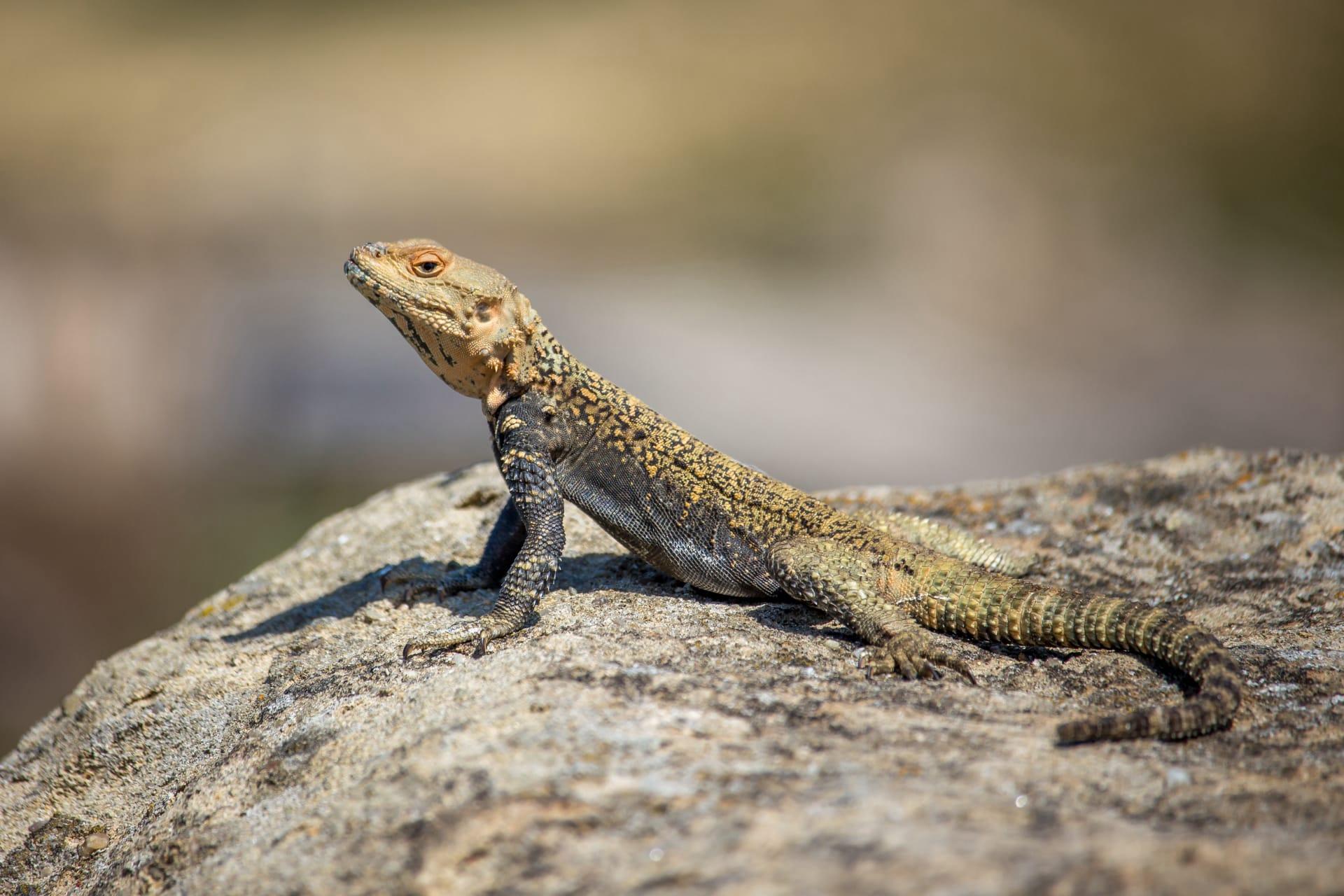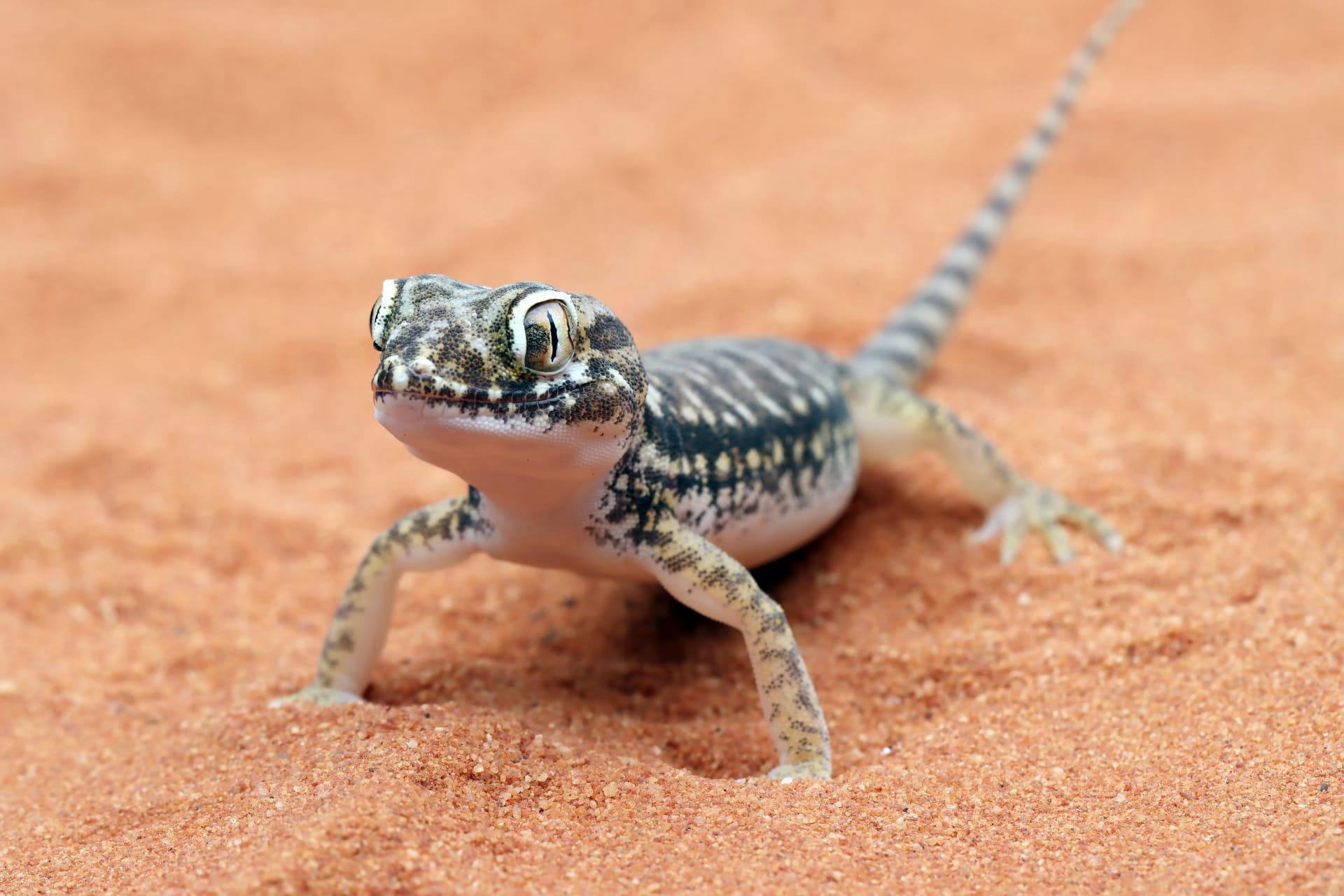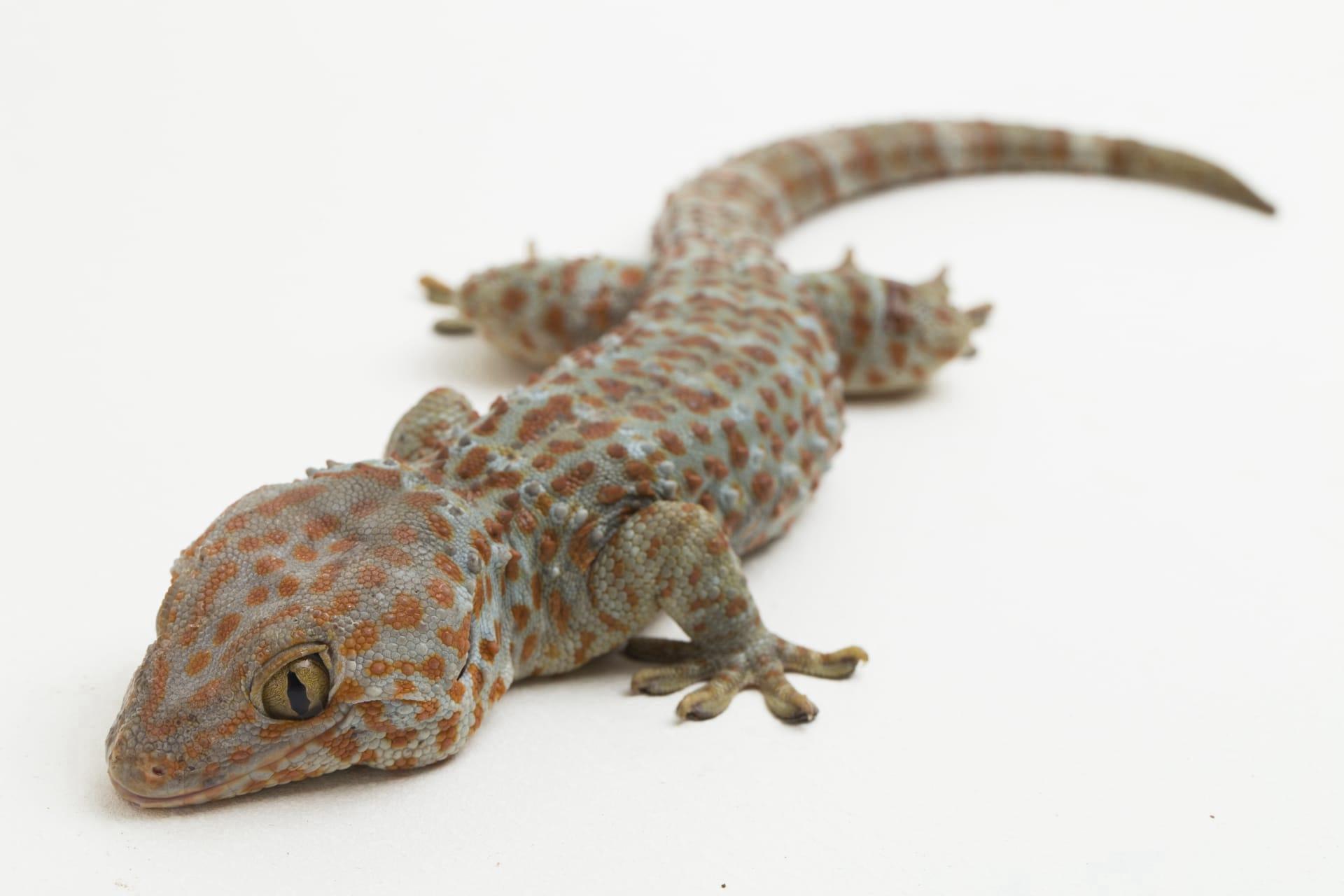Leopard Gecko Characteristics
- Home /
- Mini Encyclopedia /
- Animal /
- Leopard Gecko Characteristics
1
Leopard Geckos, scientific name Eublepharis macularius, are small and fascinating reptiles, measuring about 8 to 10 inches in length when fully grown. Their size makes them a popular choice for reptile enthusiasts. These geckos have a notable life span, living up to 20 years in captivity, with some even reaching the age of 30. Their bodies are robust and covered in unique, leopard-like spots, which contribute to their name. These spots are more pronounced in young geckos and can change in intensity as they age.
One of the most remarkable features of Leopard Geckos is their tails. These tails are not just for balance and climbing; they serve a vital role in their survival. Leopard Geckos have the ability to store fat in their tails, which is crucial for periods when food is scarce. This adaptation is particularly important in their natural habitats, where food availability can be unpredictable. Moreover, these geckos have a defense mechanism known as 'caudal autotomy.' When threatened, they can detach their tail to distract predators, allowing them to escape. The tail will eventually regrow, though it often differs in shape and coloration from the original.

2
Question: What do Leopard Geckos eat and how often should they be fed?
Answer: Leopard Geckos are insectivores, which means their diet consists primarily of insects. In captivity, they thrive on a diet of crickets, mealworms, and occasionally waxworms and roaches. The size and quantity of these insects should be appropriate for the gecko's size, typically insects that are no larger than the space between the gecko's eyes. Juvenile Leopard Geckos should be fed daily due to their rapid growth, while adults can be fed every other day. It's also essential to dust their food with a calcium supplement to prevent nutritional deficiencies, especially in young and gravid (pregnant) females.

3
Leopard Geckos have distinct movement characteristics that set them apart from other gecko species. Unlike many geckos that have toe pads enabling them to climb vertical surfaces, Leopard Geckos lack these adhesive pads. They are ground-dwelling reptiles, adapted to walking and running on solid ground. This adaptation is evident in their sturdy limbs and broad, muscular build, which allows them to move quickly to catch prey or evade predators.
In terms of hunting and feeding behavior, Leopard Geckos are opportunistic predators. They primarily hunt at night (nocturnal), using their acute sense of hearing and vision to locate prey. Their diet in the wild consists of insects, spiders, and occasionally small mammals or reptiles. They use a sit-and-wait strategy, staying motionless and then striking quickly when prey comes within reach. This hunting method, combined with their keen eyesight and hearing, makes them effective nocturnal hunters.

4
Leopard Geckos are native to arid regions and rocky, dry grassland areas in South Asia, including parts of Iran, Afghanistan, Pakistan, and India. These environments are characterized by limited water sources, fluctuating temperatures, and rocky terrain. Leopard Geckos have adapted well to these conditions, showing a remarkable ability to conserve water and regulate their body temperature. They are often found hiding under rocks or in burrows during the day to avoid extreme heat and emerge at night when temperatures are more favorable.
Reproduction in Leopard Geckos involves unique traits as well. They are oviparous, meaning they lay eggs rather than giving birth to live young. The breeding season typically occurs in the warmer months, during which a female can lay several clutches of eggs, each containing one to two eggs. These eggs are usually laid in moist soil or under rocks to ensure proper humidity levels for incubation. The gender of the offspring can be influenced by the incubation temperature of the eggs, a phenomenon known as temperature-dependent sex determination.

5
Book: "The Leopard Gecko Manual" by Philippe de Vosjoli, first published in the United States in the early 2000s. This book is an essential guide for Leopard Gecko enthusiasts, providing detailed information on care, breeding, and health. De Vosjoli, a renowned reptile expert, offers insights into the biology and behavior of these fascinating creatures, making the book a valuable resource for both beginners and experienced reptile keepers.
Book: "Leopard Geckos: Complete Herp Care" by Gerold and Cindy Merker, published in the United States in the mid-2000s. This book focuses on the comprehensive care of Leopard Geckos, including housing, nutrition, health, and breeding. The authors, Gerold and Cindy Merker, are experienced herpetologists who share their extensive knowledge and practical tips for maintaining healthy and happy Leopard Geckos.